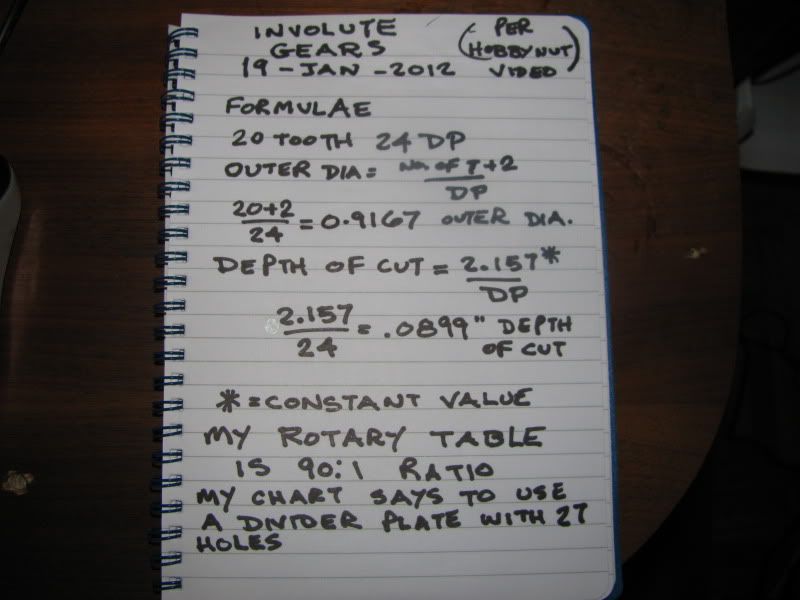I spoke to the Travers people today, and they said that they would put a replacement cutter in the mail forthwith, and that they would fax me Fedex authorization to return the number 5 gear. I will let you know how that works out!!! I decided to make a 20 tooth gear, like the one in Hobbynut's video. Next, I got my divider plates out for a look and see that they are all the wrong number of holes for what I need. One has 15, 16, 17, 18, 19, and 20 holes. One has 21, 23, 27, 29, 31, and 33 holes. one has 37, 39, 41, 43, 47, and 49 holes. The charts that came with my rotary table make reference to an "A" plate with 26, 28, 30, 32, 34, 37, 38, 39, 41, 43, 44, 46, 47, 49, 51, 53, 57, and 59 holes, and to a "B" plate with 61, 63, 67, 69, 71, 73, 77, 79, 81, 83, 87, 89, 91, 93, 97, and 99 holes. My chart says that to make a 20 tooth gear, I need to use a divider plate with either 26 or 28 holes, which I don't have. The probability that BusyBee will be able to get these divider plates for me are probably slim to none, or they wouldn't have sold me the cheesy made in India divider plates which I had to modify to get the damned things to fit my rotary table.---HOWEVER--Another set of paperwork which I downloaded off the web for a 90:1 ratio rotary table made by MiniTech of California informs me that I can use a plate with 20 holes and do 4 10/20 of a turn. Let me see now, 360 degrees divided by 90=4 degrees for each turn of my handle. Half a turn of my handle or 10/20 should get me 2 degrees. In a 20 tooth gear, 360 divided by 20 =18 degrees. SO----4 1/2 turns of my handle should get me 4.5x4=18 degrees, so that sounds about right to me. Tell me guys, since my gears will be made of either aluminum or brass, can I take a full depth (.0899") cut each time? I have read about "gashing" the gear blank with a slitting saw to almost full tooth depth before even starting to use an involute cutter such as I have purchased, but i don't know if that applies to gears this small or not (I hope not)---Perhaps it only applies to steel gears or larger gears--does anybody know?






